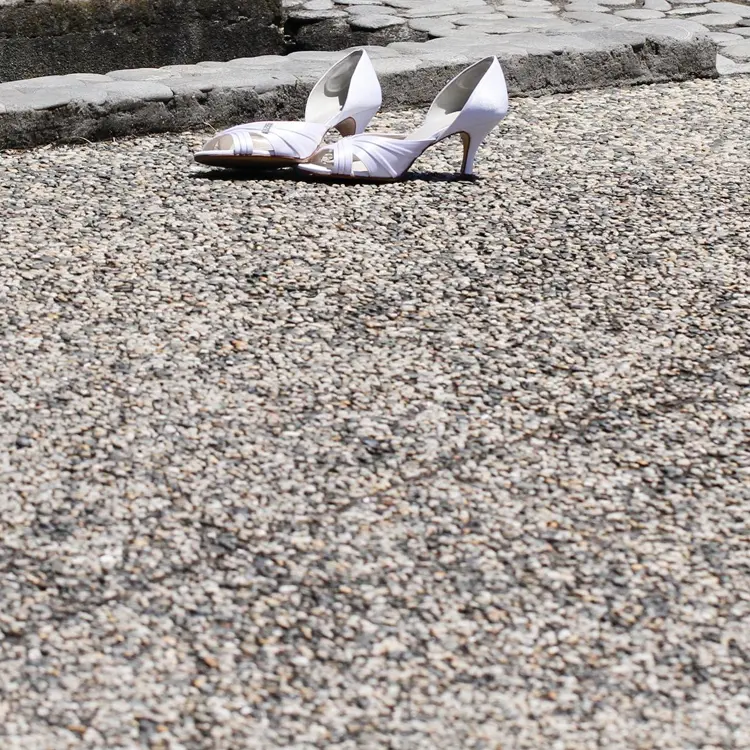When repairing sunken or uneven concrete surfaces in Brooklyn, Queens, and Long Island, property owners often decide between mudjacking and completely replacing the concrete. Each method has distinctive advantages and potential drawbacks, but mudjacking frequently emerges as the more practical, cost-effective, and environmentally friendly. Here’s an in-depth look at why one might choose mudjacking over new cement work.
Cost-Effectiveness
One of the most compelling reasons to choose mudjacking over new cement work is the significant cost savings. Mudjacking, slabjacking, or concrete leveling involves pumping a slurry mixture beneath the sunken concrete to raise it back to its original level. This process typically costs a fraction of what you would pay for removing and replacing the concrete. New cement work requires demolition, disposal of old concrete, preparation of the subgrade, and pouring of new concrete, all of which add up to higher material and labor costs. On the other hand, mudjacking uses less material and is less labor-intensive, translating into immediate and considerable savings.
Time Efficiency
Mudjacking is considerably faster than new cement work. The process can often be completed in a matter of hours, depending on the size and extent of the area that needs to be leveled. Once the mudjacking is done, the surface is ready for use almost immediately. In contrast, new cement work can take several days to complete, not including the curing time required for the latest concrete to set correctly, which can add up to several weeks before the area is fully functional. This short turnaround time is particularly beneficial for businesses and homeowners who need minimal disruption to their daily activities.
Minimal Disruption and Mess
The mudjacking process is less invasive and creates less mess than new cement work. Since breaking up and removing old concrete is unnecessary, the site remains cleaner and more orderly. The slurry used in mudjacking is pumped through small holes drilled into the concrete and patched up after the leveling is complete. This means less noise, dust, and debris, making it a more convenient option for residential areas or commercial properties that must remain operational during repairs.
Structural Integrity
Mudjacking can improve the structural integrity of the existing concrete. The slurry mixture, typically water, soil, and cement, fills voids and stabilizes the underlying soil. This can prevent future settling and provide a more solid foundation for the concrete slab. In contrast, new cement work addresses the symptoms but not the underlying cause of the settling, which is often unstable soil. New concrete can eventually suffer the same problems as the old slab without proper soil stabilization.
Eco-Friendliness
Choosing mudjacking over new cement work is also a more environmentally friendly option. Mudjacking reuses the existing concrete, reducing the demand for new materials and the intricate processes involved in producing and transporting them. Moreover, it minimizes waste, as there is no need to dispose of old concrete slabs. This method contributes to a smaller carbon footprint compared to the complete replacement of concrete, aligning with sustainable practices and eco-conscious preferences.
Versatility
Mudjacking is versatile and can be applied to different types of concrete surfaces, including driveways, sidewalks, patios, garage floors, and foundation walls. It is effective for both small residential projects and large commercial applications, making mudjacking a universally applicable solution for many concrete issues.
Long-Term Results
When performed correctly by experienced professionals, mudjacking can provide long-lasting results. The life span of the repair depends on the quality of the materials used and the condition of the underlying soil. Adequately done, mudjacking can extend the life of your concrete surfaces by many years, making it a reliable alternative to new cement work.
Aesthetics
Another advantage of mudjacking is the preservation of the existing aesthetic. When you replace concrete, it can be challenging to match the color and texture of the new concrete with the surrounding areas, leading to a patchy or mismatched appearance. Mudjacking maintains the original look of the concrete, ensuring a more uniform appearance and better curb appeal.
Limitations and Considerations
While mudjacking offers numerous advantages, it is essential to consider its limitations. It may only suit some situations, particularly if the concrete is severely damaged or the underlying soil issues are too extensive. In such cases, new cement work might be the more appropriate solution. Additionally, mudjacking might not be practical for raising extremely large or heavy slabs, where the load-bearing capacity of the slurry may need to be increased.
Conclusion
In conclusion, mudjacking is a superior option to new cement work in many scenarios due to its cost-effectiveness, time efficiency, minimal disruption, structural benefits, eco-friendliness, versatility, and ability to maintain aesthetic continuity. While it may not suit every situation, mudjacking is often the preferred method for repairing sunken or uneven concrete surfaces, offering a practical and sustainable solution for homeowners and businesses.

